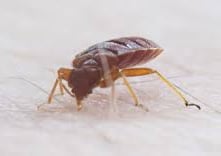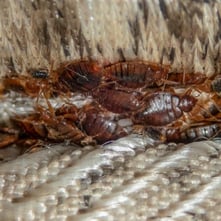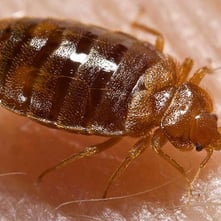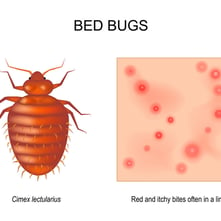What kills bed bugs instantly? And how to get rid of Bed Bugs!
Bed bugs can be a nightmare to deal with. Learn about effective strategies to eliminate bed bugs and the various treatment options available. Reclaim your sleep and peace of mind.
INFORMATIONPEST CONTROL TIPS
8/5/20234 min read


If you're dealing with a bed bug infestation, you know how stressful and inconvenient it can be. These tiny pests, known for their bites and their ability to hide in the smallest crevices, can quickly turn your home into a place of discomfort. But don't despair. In this guide, we'll show you how to get rid of bed bugs, exploring effective strategies and treatment options that can help you reclaim your home.
Contents:
Understanding Bed Bugs: An Overview
Detecting a Bed Bug Infestation
How to Get Rid of Bed Bugs: Effective Strategies
Treatment Options for Bed Bug Infestations
Maintaining a Bed Bug-Free Home: Prevention Tips
Final Thoughts
Understanding Bed Bugs: An Overview
Bed bugs, scientifically known as Cimex lectularius, are tiny, brownish insects with an oval shape that have been a pestilence to humans for centuries. These insects, when fully matured, closely resemble the size and shape of an apple seed, but this is not their only interesting characteristic. They are primarily hematophagous, which means they predominantly feed on the blood of humans and, occasionally, other warm-blooded animals.
Post their sanguinary feast, these creatures undergo a fascinating transformation. Their originally brownish exterior takes on a more reddish hue as their bodies engorge with blood, making them appear swollen and noticeably larger than their normal state.
One might imagine, given their infamy, that bed bugs possess wings, enabling them to swiftly infest areas. Yet, they lack this aerial advantage. Instead, they are wingless. This, however, doesn’t hinder their ability to spread. They are nimble crawlers, capable of navigating a range of surfaces with ease. Not only can they traverse floors with agility, but their adeptness extends to walls, ceilings, and almost any other surface within a household.
Their ability to remain elusive is one of their most formidable traits. During the daytime, when their activities might be most noticeable, they opt for stealth. They are adept at camouflaging themselves, tucking away into various hidden spots to evade detection. Some of their most favored sanctuaries include the seams of mattresses, where they can remain relatively undisturbed. They also find refuge within the intricate structures of bed frames, beneath the protective cover of box springs, behind sturdy headboards, and within any diminutive cracks or crevices located near the bed. This knack for concealment makes them particularly challenging pests, and a keen understanding of their preferred hideouts becomes indispensable for individuals aiming to thwart or eliminate a burgeoning infestation.
Detecting a Bed Bug Infestation
The first step in learning how to get rid of bed bugs is knowing how to detect them. Signs of a bed bug infestation include:
Bed Bug Bites
Bed bug bites often appear as small, red, itchy bumps, typically in a line or cluster. However, reactions to bed bug bites can vary, and some people might not show any symptoms.
Blood Stains and Fecal Spots
You might find small blood stains on your sheets or pillowcases, which are caused by bed bugs being crushed. Dark or rusty spots of bed bug excrement can also be found on mattresses, bed clothes, walls, and other surfaces.
Bed Bug Shells
As bed bugs grow, they shed their skin, leaving behind their light brown, molted exoskeletons. These can often be found in mattress seams or areas where the bugs hide.
How to Get Rid of Bed Bugs: Effective Strategies
Now that we've covered how to detect bed bugs, let's delve into how to get rid of them. The process often involves a combination of cleaning, heat treatment, and insecticides.
Deep Cleaning
Begin by cleaning all areas where bed bugs are found or suspected. This includes:
Washing and heat-drying bed linens, curtains, clothing, and other items that can withstand high temperatures.
Using a stiff brush to scrub mattress seams to dislodge bed bugs and their eggs.
Vacuuming your bed and surrounding areas thoroughly. After vacuuming, immediately place the vacuum cleaner bag in a plastic bag, seal it tightly, and dispose of it in an outdoor trash container.
Heat Treatment
Bed bugs are sensitive to heat, and exposure to high temperatures can kill them. Professional pest control services often use whole-room heat treatments, where heated air is circulated throughout a room to kill bed bugs. Smaller items can be treated in a clothes dryer on high heat, in a closed car parked in full sun on a hot day, or in a freezer for a longer period.
Insecticides
Various insecticides are available for treating bed bug infestations. They can be categorized into:
Pyrethrins and pyrethroids: These are the most commonly used insecticides for bed bug treatment. However, some bed bug populations have developed resistance to these chemicals.
Desiccants: These substances cause bed bugs to dry out and die by destroying their protective outer coating. Desiccants are a good long-term method as they'll continue to be effective as long as they remain dry.
Biochemicals: Cold-pressed neem oil is the only biochemical pesticide registered for use against bed bugs.
Pyrroles: Chlorfenapyr is the only pyrrole pesticide currently registered for use against bed bugs.
Treatment Options for Bed Bug Infestations
While DIY methods can be effective, serious infestations usually call for professional treatment. Pest control professionals can conduct a thorough inspection, provide an accurate assessment of the situation, and carry out a comprehensive treatment plan.
Options for professional treatment include:
Pesticide Treatments: This is the most common method. Professionals have access to a range of effective pesticides that aren't available to the public.
Heat Treatments: This involves heating the room to a temperature lethal to bed bugs.
Fumigation: This is a more extreme solution, often reserved for severe infestations where all other treatments have failed.
Maintaining a Bed Bug-Free Home: Prevention Tips
Learning how to get rid of bed bugs is just the first step. Maintaining a bed bug-free home requires continuous effort. Here are some prevention tips:
Check second-hand furniture, beds, and couches for any signs of bed bug infestation before bringing them home.
Use a protective cover that encases mattresses and box springs to eliminate many hiding spots.
Reduce clutter in your home to reduce hiding spaces for bed bugs.
Be vigilant when using shared laundry facilities. Transport items to be washed in plastic bags and remove from the dryer directly into a new bag.
Final Thoughts: Knowing how to get rid of bed bugs and implementing an effective plan can help you reclaim the comfort of your home. However, due to their resilience and their ability to hide in hard-to-reach places, professional treatment is often required to eliminate them completely.
Don't hesitate to seek professional help if you're dealing with an infestation. The peace of mind knowing that the problem has been handled thoroughly and correctly is well worth the cost. Stay informed, stay vigilant, and keep your home bed bug-free.






